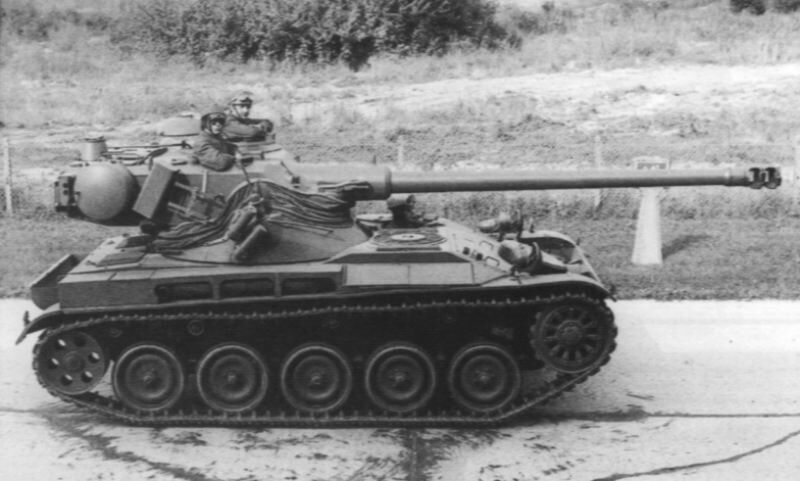
This time, we are taking a look at the technical details of this interesting vehicle, as well as taking it for a spin across the British countryside – and yes, we were stopped by the police!
France tried, after the war, to integrate the lessons learned in a new tank doctrine integrating new models, which emphasized firepower and mobility. At the same prewar tactics regarding well-armed fighting reconnaissance armored cars, which could act as anti-tank units as well were also utilized. The German adaptation of high velocity AT guns on various light chassis also indicated some pathways for French engineers to work with. The French Army fully exploited the new promising oscillating turret concept to fit this doctrine.
The oscillating turret was basically a way to integrate a larger gun in a smaller turret, allowed by the use of an autoloader, while the lower part of the turret was conventional and still fully traversed. What it meant was that the whole “upper” (oscillating) turret was depressed or elevated as a single block, comprising much of its equipment and personal. In a conventional turret, the gun was elevated and depressed independently inside, the turret providing only traverse. The advantages of such a system were to provide a much smaller -thus lighter- kind of turret, which could mount a bigger gun compared to the size of the chassis, just like tanks-hunters.
The AMX-13 is a French light tank produced from 1953 to 1985. It served with the French Army, as the Char 13t-75 Modèle 51, and was exported to more than 25 other nations. Named after its initial weight of 13 tonnes, and featuring a tough and reliable chassis, it was fitted with an oscillating turret built by GIAT Industries (now Nexter) with revolver type magazines, which were also used on the Austrian SK-105 Kürassier. Including prototypes and export versions, there are over a hundred variants including self-propelled guns, anti-aircraft systems, APCs, and ATGM versions. Total production of the AMX-13 family is approximately 7,700 units, around 3,400 of which were exported.
The tank was designed at the Atelier de Construction d’Issy-les-Moulineaux (AMX) in 1946 to meet a requirement for an air-portable vehicle to support paratroopers. The first prototype ran from 1948. The compact chassis had torsion bar suspension with five road-wheels and two return rollers; the engine runs the length of the tank on the right side, with the driver on the left. It features an uncommon two-part oscillating turret, where the gun is fixed to the turret and the entire upper turret changes elevation. The turret is set to the rear of the vehicle and holds the commander and gunner. The original 75 mm gun was loaded by an automatic loading system fed by two six-round magazines located in on either side of the automatic loader in the turret’s bustle. The 12 rounds available in the drum magazines meant that the crew could engage targets quickly; however, once those rounds were expended, the vehicle had to retreat to cover and the crew had to reload shells from outside the vehicle
